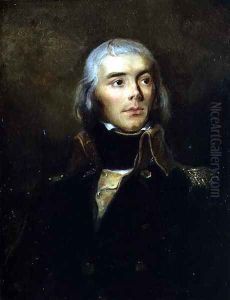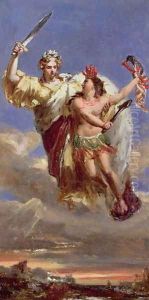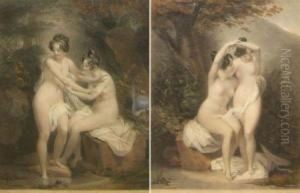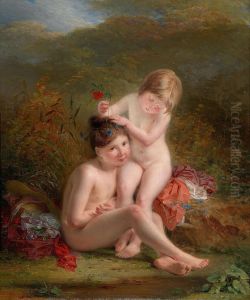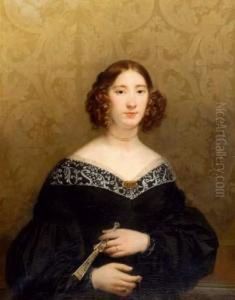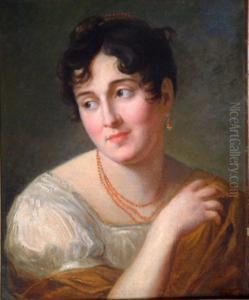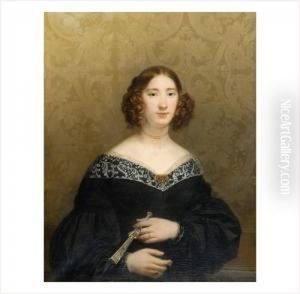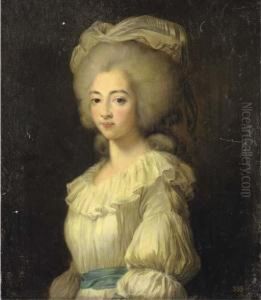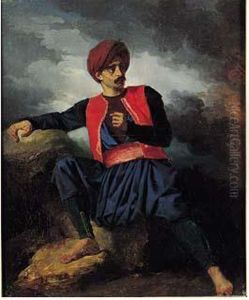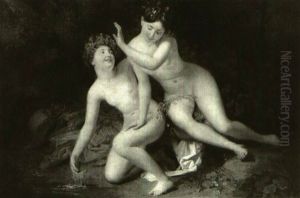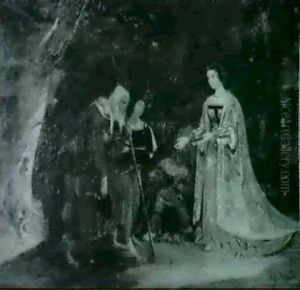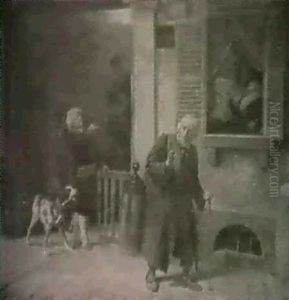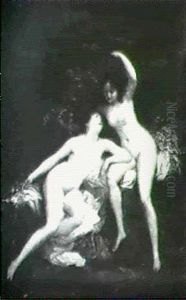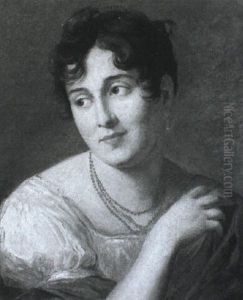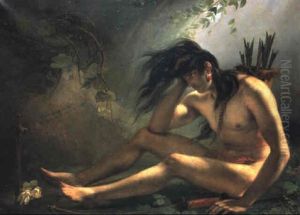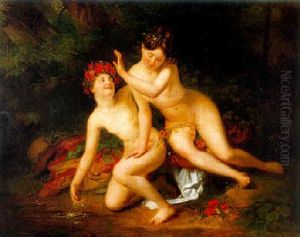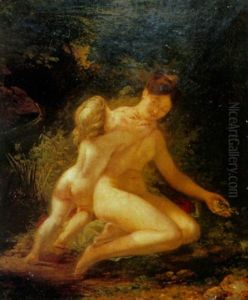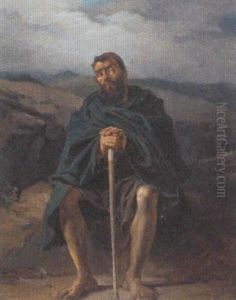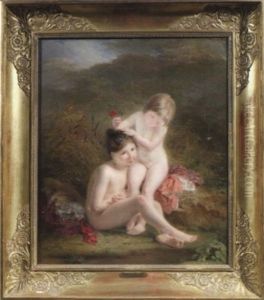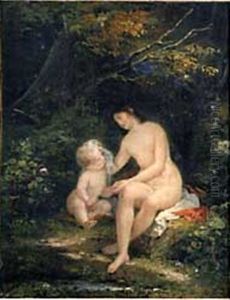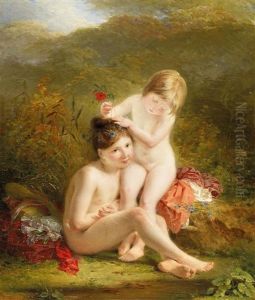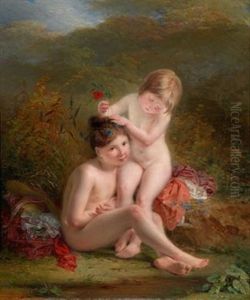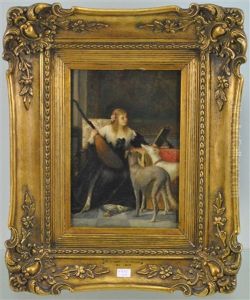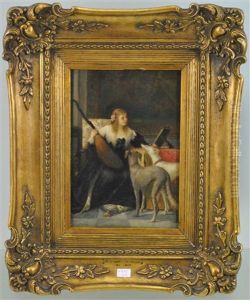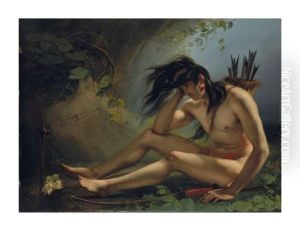Louis Edouard Rioult Paintings
Louis Edouard Rioult was a French painter and a representative of the neoclassical art movement. Born on December 10, 1790, in Paris, France, he was active during a period that saw the transition from Neoclassicism to Romanticism.
Rioult initially trained under Jacques-Louis David, the preeminent French painter of the neoclassical style, who had a significant influence on his artistic development. Rioult's work was characteristic of the neoclassical movement, emphasizing clarity, order, and the ideals of classical antiquity. This training period was essential in shaping his techniques and his approach to composition and form.
During his career, Rioult produced a variety of works, including historical scenes, portraits, and religious images. His paintings are known for their meticulous detail, precise lines, and restrained color palettes, which were all hallmarks of the neoclassical style. He exhibited at the Paris Salon, the official art exhibition of the Académie des Beaux-Arts in Paris, which was the principal showcase for artists to present their works to the public and potential patrons.
Rioult's contributions to French art were recognized in his time, and he received commissions for various important projects. Despite this, he did not achieve the same level of fame as some of his contemporaries. Nevertheless, his works are appreciated for their adherence to the neoclassical aesthetic and for their reflection of the artistic and cultural values of his era.
Louis Edouard Rioult passed away on June 30, 1855, in Paris. Although not as widely known today as other artists from the same period, his paintings remain a part of the collections of art museums and continue to be studied as examples of early 19th-century French neoclassical painting.
